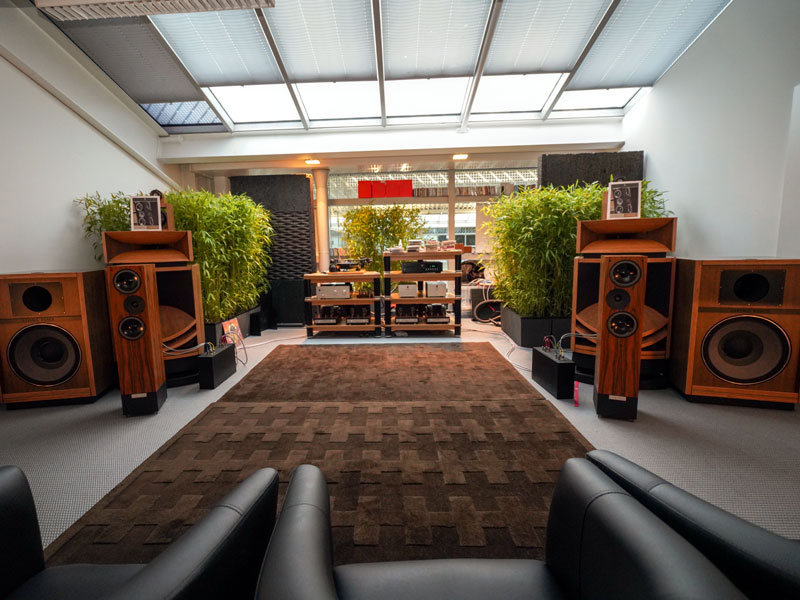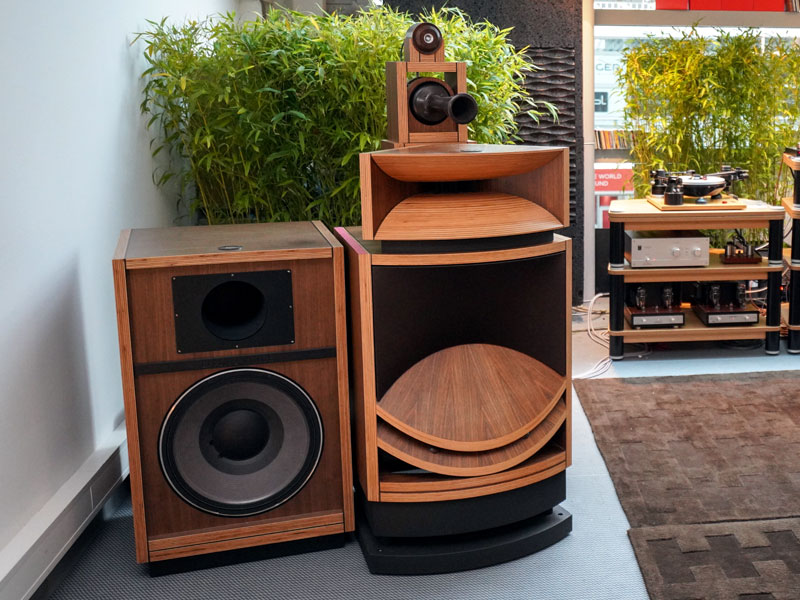High End 2019 • Best of Show
In some respects, Living Voice has become a victim of its own success. We’ve become so inured to the great sound the company regularly produces, year on year, that continuing excellence has become the norm, no longer seeming to satisfy the need to astonish and impress or the demands for novelty that garner best-sound awards in show reports. “Another great-sounding system from Living Voice” hardly makes the headlines, yet that ignores two important things: first, the fact that the company does actually produce an exceptional sound show after show bespeaks incredible care and capability, a deep knowledge of their products, and demonstrates the consistency of those products -- and that should be reassuring to both potential customers and the rest of us alike; second, Living Voice performs this act with systems that are constantly evolving and actually becoming more affordable (it’s a relative term) with each passing show. The Vox-series speaker for everyman might be a long, long way off, but for anybody with an interest in reproducing music at home, the Living Voice experience demonstrates both what is possible (even in a conference room at a convention center) and just how far sheer attention to detail when it comes to system setup can take you. This year, the company again showed the "simplified" Vox Palladian speakers (£295,000 per pair), with their less ornate finish and less intricate structure -- at least when compared to the Vox Olympian. They also stuck with Kondo electronics, despite dissatisfaction with the performance of current models, a situation that has led Living Voice to surrender the brand’s UK distribution. The familiar lineup of electronics included the now-discontinued M7 phono stage (£18,000) with Living Voice step-up transformers (£6000), the M77 preamp (£48,000) and two pairs of Gakuoh monoblocks (£84,000 per pair), all connected with Living Voice and Kondo cabling. Sources were a Living Voice-modified Canary Audio CD player (the Living Voice CD300, £15,000) but primarily a Grand Prix Audio Monaco v2.0 turntable ($37,500) carrying a Kuzma 4Point 14 tonearm ($8995) and CAR-60 cartridge ($12,995). As before, the whole system was run from the Living Voice Pure Music battery power supply (£30,000), and there was also a second tonearm standing by in the shape of a ViV Labs Rigid Float RF7 (£4500) and Ortofon SPU Century (£4000). But this year’s new kids on the block were the Vox Basso subwoofers (£48,000 per pair), compact (again, a relative term) reflex-loaded cabinets sporting single forward-firing 18” units and weighing in at an almost approachable price. That brings the cost of a full four-box Vox system down to less than £350,000 -- still way beyond all but the super rich, but less than half the asking price of the Vox Olympians, something which wouldn’t be quite so significant if the sonic and musical qualities here didn’t represent a variation on the Vox theme rather than a step down in quality. In fact, many a listener opined that this was the best sound yet from a Living Voice system in Munich. Of course, much of the credit for that sound can be laid at the feet of the Grand Prix turntable and, in particular, the Kuzma CAR-60 cartridge, a needle that needs careful handling and care in setup but which in the right hands (and the right tonearm) can deliver stellar results. The amps also played their part, as did the cables and the Living Voice G2 equipment racks (£28,800 each), but what really impressed once again was the sheer coherence and musical integrity of the system as a whole, which speaks volumes about the integration of the first non-horn Vox subs. Indeed, the sound was impressively weighty and dimensional, and if the bottom-end lacked the absolute texture and transparency of the horn-loaded subwoofers, then it more than compensated with its planted sense of substance and weight. We wondered whether some of those positive reactions were fed by the presence of that more familiar musical foundation, closer to the performance of large box systems than the full-range horns. However, that can only be idle speculation, and there was no doubting the majestic musical confidence, the sheer stability and dynamic and expressive authority of this system. Whether the system played an Arvo Pärt piece for cello and piano or the familiar, plangent trumpet and sax on "Autumn Leaves" (from the Analogue Productions 45rpm version of Cannonball Adderley’s Somethin’ Else), the absolute freedom with which the instruments were reproduced was as natural and effortless as it was engaging, while the greater sense of acoustic space added to the palpable sense of the musicians’ presence. As always with a Vox system, the relationship between players was explicit in its clarity, the purpose in the music compelling. The lower registers, for all the weight and substance, still managed to float with a fluid, unimpeded grace and the pace to match the main speakers, giving piano a very real sense of presence, body and complexity, orchestras that ability to swell and grow from solo part to full tutti, without restraint and with just the right degree of effort -- on the part of the players rather than the system.
The Living Voice Vox-series speakers (and
their associated systems) are an important part of the Munich landscape. Not because of
their commercial relevance -- most of us cannot even dream of owning equipment that costs
these prices, and those who can often already do -- but because every year they reaffirm
the potential of high-end audio, the belief that we really can bring great performances
home. The Living Voice speakers might not be the only ones capable of this level of
performance (although they share that status with a small but extremely select group), but
they are the only ones that come out in public, year after year, to strut their stuff. Far
from an exercise in hubris or self-aggrandizement, their creation is a high-risk strategy
that demands exacting execution, one that should command both gratitude and respect.
Increasingly, that’s the case, and over the years, more and more industry insiders
and commentators have come to recognize just what Living Voice is achieving and what these
systems represent. Putting aside personal loyalties and interests, simply enjoying the
music, these systems are a chance to reconnect with what we seek and what we promise. |


